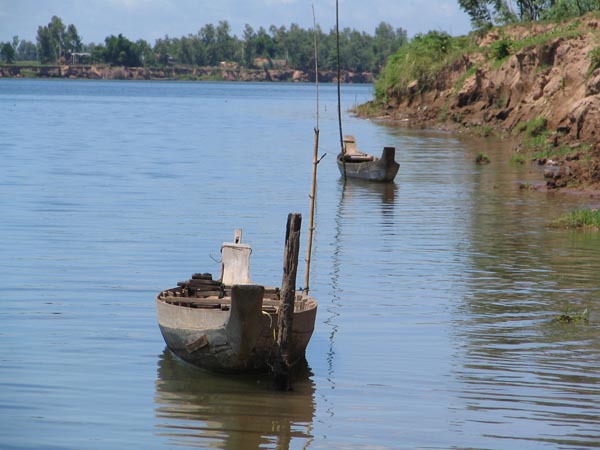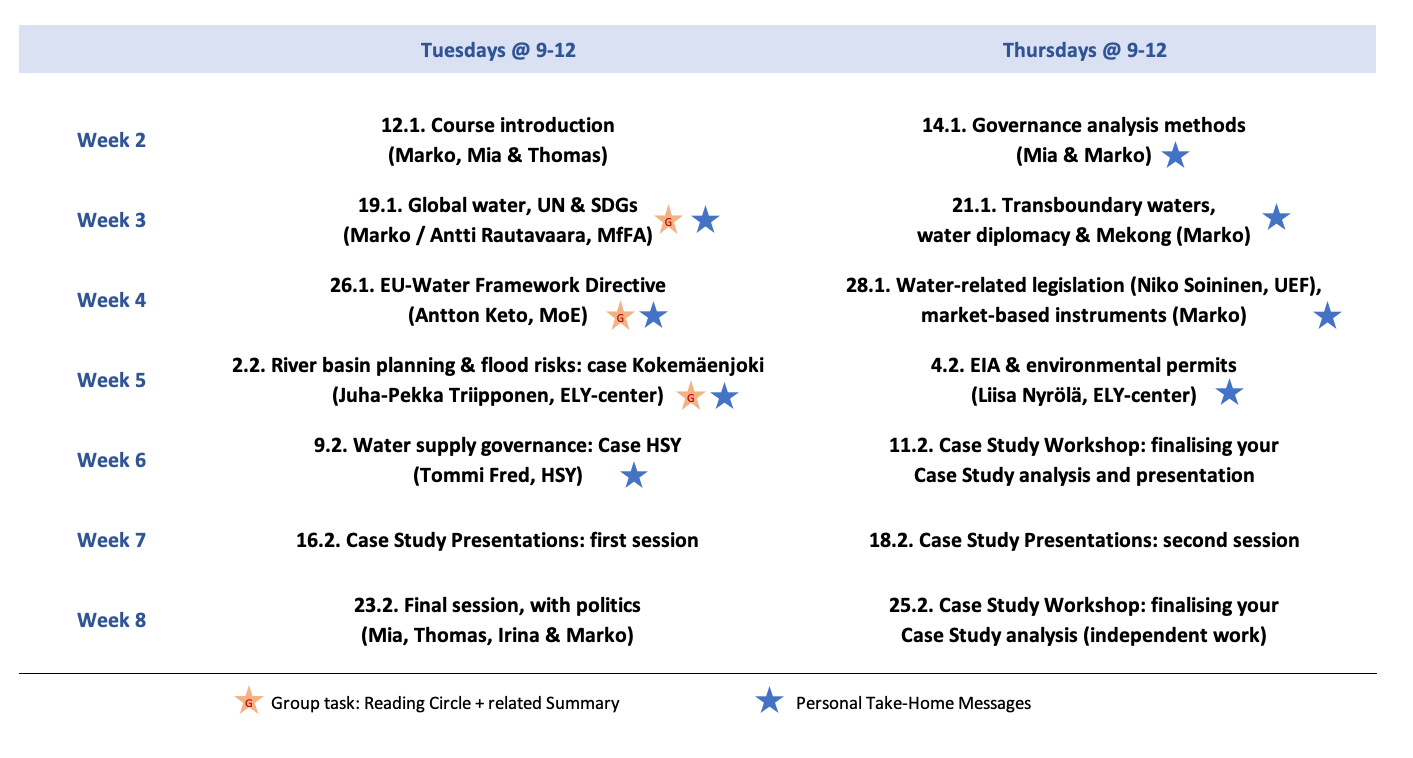WAT-E2080 - Water and Governance D, Lecture, 10.1.2022-2.3.2022
This course space end date is set to 02.03.2022 Search Courses: WAT-E2080
Topic outline
-

Ever wondered what governance is? Or who are your stakeholders, and what is the difference between organisation and institution? How does legislation affect water engineering? And how this all is related to sustainability?
Welcome to Water & Governance course! Kindly note that following Aalto University's latest instructions, teaching in Period III is organised remotely or in hybrid form. Contact sessions will be organised in Teams. Please see Online Practicalities section in MyCourses for further instructions.
The course starts on TUESDAY 11.1. at 9.00 sharp: attending this Contact Session confirms your attendance in the course (subject to the student's approval to the course: see Sisu for more).
The course is part of our Master's Programme in Water and Environmental Engineering (WAT), and it provides you with an in-depth introduction to broad issue of governance in relation to water management. The course combines the theory of key elements of water governance with practical case studies, focusing on different governance contexts .
The course sessions are on Tuesday mornings (9.00-12) and Thursday mornings (9.00-12) during Period III: note that the sessions start at 9.00 sharp! For details of the sessions, see the Sessions & Reading Circles sub-page.
The responsible teacher for the course is Associate Professor Marko Keskinen, with Mia Pihlajamäki working as a Course Coordinator and Thomas Banafa as Course Mentor. In addition, we'll have a wonderful set of experts as our visiting lecturers.
You can send questions about the course to course email: wat-e2080 (at) aalto.fi
Welcome to the course!

